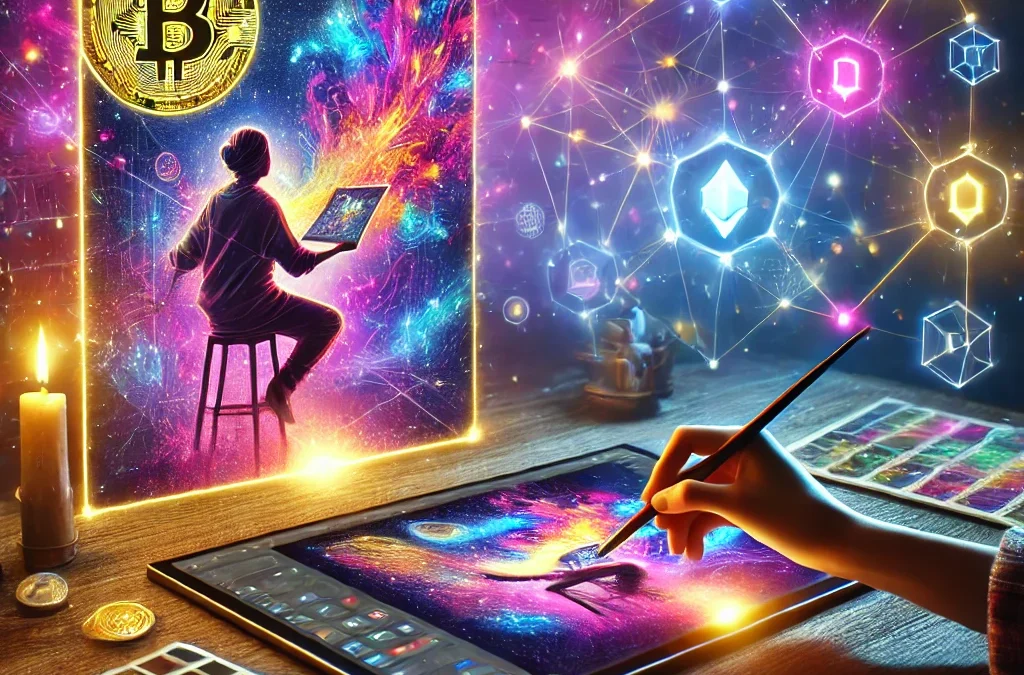How Can Digital Artists Monetize Their Work in the Age of NFTs?
The rise of Non-Fungible Tokens (NFTs) has revolutionized how digital artists monetize their work, opening new avenues for creativity, ownership, and income. Unlike traditional art markets, NFTs enable artists to tokenize their creations, sell them directly to collectors, and receive ongoing royalties. Here’s a detailed look at how digital artists can capitalize on this transformative technology.
1. Understanding NFTs and Their Benefits
NFTs are digital assets stored on a blockchain, representing ownership of unique items such as art, music, or videos. For digital artists, this means:
- Proving Authenticity and Ownership: NFTs certify the originality of a digital artwork, solving issues of duplication and piracy.
- Global Market Access: Artists can showcase and sell their work to a global audience without relying on traditional galleries.
- Royalties on Resales: Many NFT platforms allow artists to earn a percentage of the resale value each time their art changes hands.
2. Choosing the Right NFT Marketplace
Several platforms cater to digital artists, each with unique features and communities. Popular options include:
- OpenSea: A versatile marketplace for a wide variety of digital assets.
- Foundation: Known for its artist-curated collections and premium aesthetic.
- Rarible: Offers customizable royalty settings and a user-friendly interface.
- SuperRare: Focuses on high-quality, exclusive digital art.
Artists should evaluate factors like audience size, transaction fees, and community reputation before choosing a platform.
3. Creating and Minting NFTs
Minting is the process of converting a digital file into an NFT. Here’s how to get started:
- Prepare the Artwork: Ensure your work is unique, high-quality, and ready for tokenization.
- Select a Blockchain: Ethereum is the most popular, but alternatives like Solana and Polygon are gaining traction for lower fees.
- Upload and Mint: Use your chosen platform to upload the artwork, set royalties, and mint the NFT. Some platforms may charge gas fees, which vary based on network activity.
4. Building an Engaged Community
Success in the NFT space often depends on your ability to connect with collectors and fans. Strategies include:
- Leveraging Social Media: Use platforms like Twitter, Instagram, and Discord to showcase your work and interact with your audience.
- Storytelling: Share the inspiration behind your creations and the meaning of your art.
- Collaboration: Partner with other artists or creators to reach new audiences and build credibility.
5. Exploring Revenue Streams Beyond Sales
NFTs allow digital artists to diversify income streams:
- Limited Editions: Create exclusive series or variations of a piece to appeal to collectors.
- Virtual Experiences: Offer perks such as behind-the-scenes content, AR/VR experiences, or access to private communities.
- Licensing Rights: Grant usage rights for NFTs, enabling buyers to use the art in games, videos, or merchandise.
6. Navigating Challenges and Risks
While NFTs offer exciting opportunities, they come with challenges:
- Environmental Impact: Energy-intensive blockchain networks like Ethereum have drawn criticism. Artists can mitigate this by choosing eco-friendly platforms or supporting initiatives like Ethereum 2.0.
- Market Volatility: NFT values can fluctuate significantly, requiring artists to plan for potential financial risks.
- Intellectual Property: Ensure that your NFTs do not infringe on copyrights or trademarks to avoid legal issues.
7. Case Studies: Success Stories in NFT Art
- Beeple (Mike Winkelmann): His digital artwork Everydays: The First 5000 Days sold for $69 million at Christie’s, making him one of the highest-earning digital artists.
- Pak: Known for innovative NFT projects like Merge, which generated millions by selling “mass” units of a single piece.
- FEWOCiOUS: A teenage artist who has sold millions of dollars worth of NFTs by combining art with personal storytelling.
These examples highlight the potential for both financial success and creative innovation.
8. Future Opportunities in the NFT Space
The NFT ecosystem continues to evolve, offering new ways for artists to thrive:
- Dynamic NFTs: Tokens that change over time or respond to external factors, allowing for interactive and evolving art.
- Metaverse Integration: Digital art is increasingly being used in virtual worlds, opening up opportunities for exhibitions, installations, and wearables.
- Fractional Ownership: Artists can sell shares of an artwork, making it accessible to more collectors and democratizing the art market.
Conclusion
The age of NFTs has empowered digital artists with tools to monetize their work, engage global audiences, and secure royalties for the future. By embracing this technology, artists can unlock new creative possibilities and establish themselves in a rapidly growing market. However, success requires not only artistic talent but also an understanding of the NFT landscape and a proactive approach to community building. For digital artists willing to adapt and innovate, NFTs offer a world of opportunity.

